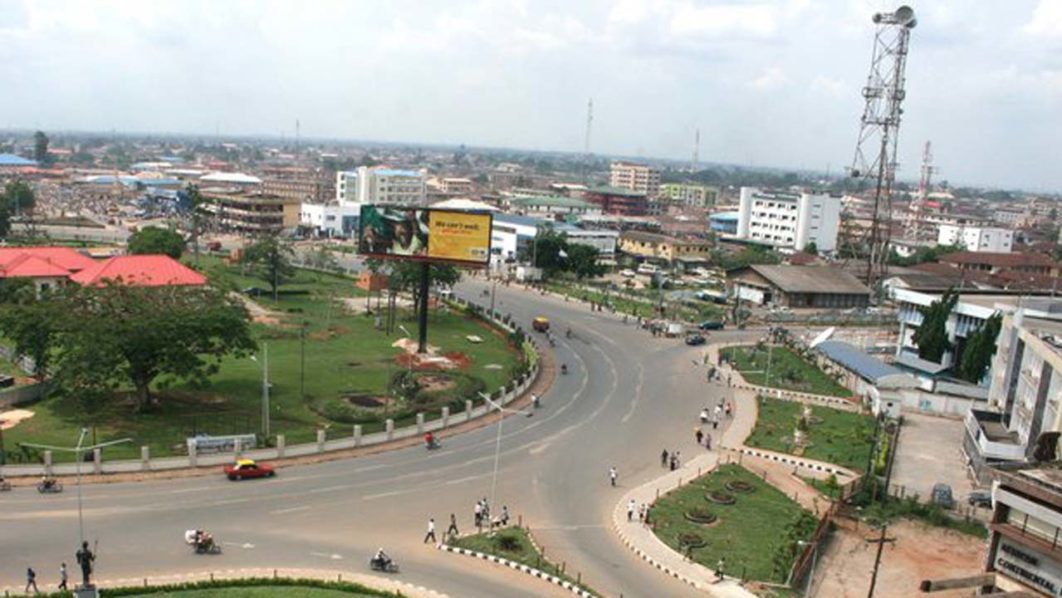
Since the Industrial Revolution in Europe in the 19th Century when machines started to take the place of the raw and physical strength of man to get things done, the human society has witnessed tremendous technological development in all spheres of human life.
As typical of the shared human nature of devising means of addressing challenges since that era, scientists and researchers, including social engineers, have not rested in their quest to make life and living easy and more meaningful for man and his environment. The human society has therefore witnessed advancement in the deployment of technology in the fields of Medicine, Transportation, Agriculture, Information and Communication Technology etc.
As Einstein posited, change is now the measure of intelligence. Technological advancement has become the order of the day. With development in Technology, man has achieved success in the course of changing his society for good. Innovation has raised the ante and emphasis has shifted from the old and clumsy ways of doing things to a new, improved and more strategic approach to getting them done.
Digital Transformation is the key to the future. This is true of Nigeria and, indeed, Africa. Foresighted national and sub-national governments must internalise this fact and invest in technology. Hatem Hariri Managing Director, Avaya Africa, a global leader in Business,
Communication, Systems and Services put it quite succinctly when he observed in his work, “Digitalisation to Drive Government’s Operational Excellence” (2016) that with the majority of Africa’s population under 24 years of age and the World Bank predicting that the continent’s population will reach 2.8 billion in 2060 – more than a quarter of all the people on earth; digital transformation is the key to Africa’s successful future.
Progressive governments and organisations, including institutions across Africa have come to embrace this positively disruptive and smart way of thinking and are increasingly adopting digital technology as a governance strategy. In Edo, the state government, under the leadership of Governor Godwin Obaseki has fully embraced technology and innovation in the conduct of government’s business.
In the book, Things Fall Apart, the legendary author Professor Chinua Achebe put it in the mouth of Unoka, the father of Okonkwo, the hero and central character of the book, the eternal words.
‘‘The sun shines first on those standing before it goes on those sitting.” Consistent with the above statement, Edo State government has been deliberately investing heavily in technology, setting the pace and preparing the state to serve as the undisputed technology capital of Nigeria. Edo is standing tall so that when the sun shines, it shines on us first. When the expected glorious digital future of Nigeria becomes a reality, Edo State will be the first to experience it.
Experts have estimated that in a few years from now, more than 75 per cent of businesses will be digital or have digital business transformations underway. Edo is working hard and getting prepared to be the first state in Nigeria to achieve this. Massive investment is currently ongoing in fibre optics across Edo State in an essentially public / private sector collaborative efforts. So far, in strong partnership with the private sector, Government has deployed about 1,282 kilometres of fiber optics across the 18 local government areas of Edo State. This is in addition to the establishment of a Tier 3 Data Center to house all EDSG present and future data.
This centre provides high-level security, data retention and business continuity capability in the state with the capacity to co-locate third-party data at a subsidised rate.
Government has simultaneously deployed a document management system that is archiving all EDSG data with an Mfile application deployed for document uploading and retrieval.
Similarly, the Edo Website Revamp Project is on-going and is being executed vigorously. Government has also just concluded its Technology Infrastructure Refresh which replaced all obsolete network equipment in all Ministries, Departments and Agencies (MDAs) connected to the EDSG network. These are indeed strong statements of intent.
Edo State has, since November 2021, adopted technology as a governance strategy and policy with its e-governance platform across all the Ministries, Departments and Agencies. The state recently took a further step in its tech adoption agenda by the automation of the management of its vehicular assets with the launch of the CONNECT EDO Mobile Application, otherwise known as MEGA CONNECT, an initiative that is geared towards ensuring effective management of the state’s vehicular fleet and the elimination of financial waste.
The question on the lips of many stakeholders, including civil/public servants, has been why this new approach? Why do we have to change an established tradition? At the launch of the project, as Chairman of the Fleet Management Team, I shared two personal experiences which buttress the expediency of the new initiative by the Governor. I reproduce them hereunder.
About three years ago, as Chairman of the State Committee on Auctions, my team and I visited some mechanic workshops in Benin City on intelligence that there were vehicles belonging to Edo State Government that had been abandoned there for years.
What we found in some of these workshops left us in bewilderment; badly vandalised vehicles that had been abandoned for several years in the workshops. One could barely recognise them, except that some still had their plate numbers. In most of these cases, the mechanics could not give us the identities of those who brought the vehicles to their workshops, neither were there data showing which Ministry, Department or Agency owned them or what mechanical challenges resulted in their presence there.
Anthony .O Okungbowa Esq is the head of Service, Edo State. He is also the chairman of the Fleet Management Committee, Edo State.
The second incident happened in Auchi, Edo North Senatorial District some years ago. We were on a visit there in connection with another business of government. While in my hotel room, at about 7 p.m., someone called to inform me that he had seen a vehicle belonging to the state government being towed towards a certain part of the town. I had to quickly call some policemen together and, luckily, we got the driver of the towing van apprehended and the vehicle recovered. On interrogation, the driver could not give a coherent account of who authorised the movement of the vehicle and where it was being taken to. What was however obvious was that the movement of the vehicle was fraudulent and deliberately orchestrated at that hour of the day, to avoid prying eyes and was on its way, apparently, to join a host of others that had fallen into private hands and stolen. What these two incidents demonstrated clearly, was that over time, there had been failure on the part of government to properly manage its vehicular assets and optimise their benefits.
The manual approach which government had hitherto adopted and employed in managing its vehicular fleet and schedule of officers using them had become anachronistic, outdated and unproductive. It was also not in sync with the e-governance strategy which government had
adopted as a governance philosophy.
Under the old manual order, each Ministries, Department or Agency was responsible for the management, operation and maintenance of the vehicles deployed to it. This led to suboptimal utilisation, uneven distribution, lack of central inventory and poor quality assurance and control. Government could not tell how many vehicles it had, which were operational and serviceable and which were not, what “state of health” each vehicle had the servicing/maintenance activities and generally, government had no data on management of its vehicles. In these hard times of extremely scarce resources, government could no longer afford the needless losses which the old system had engendered. There was just no such financial luxury available anymore.
The foregoing gave rise to the need to look for and emplace a more sustainable system for the management of state-owned vehicles to improve their utilisation and distribution in order that service delivery might be optimal and the cost of management, operation and maintenance, reduced to the barest minimum. Mr. Governor’s idea of MEGA CONNECT was designed to achieve this purpose. The overall goal is to improve on service delivery within the Public Service by ensuring that automobile resources are put together in a pool and applied optimally by being made available for all employees in the course of performing their day-to-day work schedules. Edo MEGA CONNECT is a technology-driven central management system which is in sync with the concept of e-governance which Edo State government currently operates.
How does the system work? Tagged the ‘’EDSG Workplace Mobility Solution,’’ the scheme is made up of two key components viz; ‘The Fleet Management System’ and the ‘Ride-on Demand Application. The system has a software designed to maintain a central inventory of
vehicles and oversee the management and maintenance of same as well as a Ride Share Application which provides effective and seamless transportation services in the form of a ride hiring service to all employees across the Ministries, Department and Agencies of
Government. While the first component deals with the general procurement and maintenance of vehicles within the system, the second is the Ride-on-Demand App nicknamed the ‘‘EDSG Uber.’’
Every Ministry, Department or Agency has a team of officers handling the official mobility schedule of officers. An officer who needs to travel books in advance with this team which in turn, using the electronic link provided, makes the booking with the M.E.G.A Connect Rideon-Demand. Details of the Ministries, Departments, and Agencies date of trip, purpose and time of departure are provided. On the day in question, the vehicle arrives at the Ministry,
Department or Agency and the officer makes the trip. He does not have to bother about fueling, repair of the vehicle or welfare of the driver. He just boards the vehicle and makes his trip. It is the same process with adhoc movement of officers, albeit, in such cases, clearly, booking in advance is unnecessary.
On return, the vehicle gets back to base and can be assigned other functions. This enables efficiency in the planning and use of available vehicular resources. Instead of a vehicle being perpetually attached to an officer who may not immediately require it, it returns to base on
completion of an assignment and immediately becomes available for other assignments. Use of official vehicles for unofficial or private purposes which exposes them to needless and otiose losses like theft, shortened vehicle life as a result of overuse or misuse, is accordingly and consequently avoided.
The Fleet management component is designed to run on the use of technology and other set processes that cater to preventive and reactive maintenance and thus assist in managing a comprehensive inventory (with service status), create a verifiable database of vehicles available to the State Government; it also includes scheduled maintenance of vehicles to prevent breakdown, tracking to know where they are at every point in time as well as a history to keep record of fuel usage and service intervals.
As observed above, it is expected that this initiative will result in an extended service life, enhanced planning strategy and service status for Government vehicles; save cost through preventive maintenance as well as achieve optimization in doing a lot more with fewer assets through carefully planned deployment.
The present intervention has led to the recovery of several unserviceable vehicles including the tow truck owned by the State Government which was left to rot away at the State’s Ministry of Transport (now defunct) for about four years. The case of this vehicle is
particularly instructive. It demonstrates the avoidable neglect which Edo State Government vehicles were subjected to under the old order. The truck had been abandoned for about four years on the pretext that it had a huge maintenance problem. The new management team fixed it in just under four hours at next to nothing in terms of cost and the vehicle is now back to the use for which it was procured. Interestingly, this tow truck has been described by experts as one of the best available in the market.
The Ride-on-Demand component of the scheme is an automated vehicle on-demand system that operates in the fashion of the popular ride hailing service that allows a user request pickup using a pre-installed mobile App to move around while conducting government business.
It is popularly referred to as ‘EDSG UBER’ because of its similarity in operations with the globally acclaimed private transportation initiative UBER.
The Ride-on-demand system guarantees effective access to mobility as Ministries, Departments and Agencies which previously did not have operational vehicles at all or did not have enough will be able to access and benefit from the vehicles in the pool. This inevitably results in improved efficiency through better time management of both driver and
vehicle and ultimately a reduction in the cost of procuring and maintaining operational vehicles for Government. We expect a significant drop (at least thirty percent) reduction in the cost of vehicle maintenance over the next two years and an equivalent improvement in the service life of the Edo State Government fleet and even better as the years go by.
Apart from providing a more comfortable and convenient transport system for the Civil/Public Service, the new scheme is also expected to take off the burden of vehicle maintenance and fueling from the various Ministries, Departments and Agencies. The package is delivered at no cost to the beneficiaries; all they need do is just download the App on their phones and, similar to the usual commercial ride hailing operational module, book their rides at no cost to them, and, seamlessly too. The new fleet management strategy in Edo is indeed a revolution in the management of Public vehicles and we hope that other states will take a cue and learn from it.
Let me conclude this article by drawing strength from the ever-green statement of Robert Schuller who once said that the only place where dreams become impossible is in one’s thinking. Good leadership makes dreams possible. General Powel of the United States of America is reputed to have once said; “Leadership is solving problems.” The Governor of Edo State Mr. Godwin Nogheghase Obaseki has, once again, through the instrumentality of the new Fleet Management Initiative, demonstrated his oft-acknowledged capacity for solving problems and making dreams possible. Truly, Dreams are becoming realities in Edo. The new Fleet management system is one such dream.






